I earn commissions from my affiliated links. Please see my disclosure policy for more details.
Are you looking for an easy and engaging way to teach textures? Sensorial materials are a great tool for teaching young children about the world around them, providing hands-on experiences with real objects, priming their fine motor skills, and inciting curiosity towards exploration.
Of all the Montessori sensorial activities available, one of our favorites is the Rough and Smooth Touch Tablets! This simple exercise provides students with tactile exploration that will help them learn more about texture discrimination – in a fun and memorable way. Read on to find out why this popular Montessori material should be part of your classroom routine!
Rough and Smooth Touch Tablets
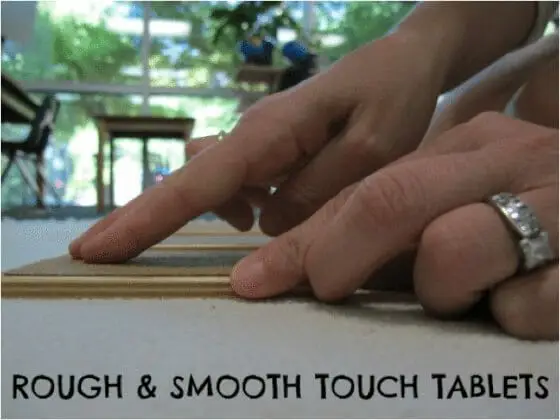
The Rough and Smooth Touch Tablets Lesson: Presentation I
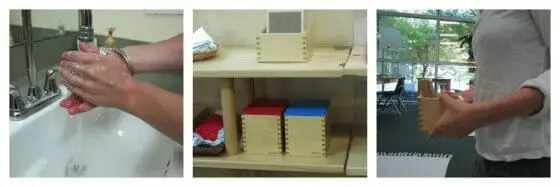
- Prepare the box ahead of time with only the roughest and smoothest pairs
- “Would you like to see how to use the rough and smooth touch tablets?”
- “Let’s wash our hands first.”
- Go to the Sensorial Area, identify the box, and carry it to the table.
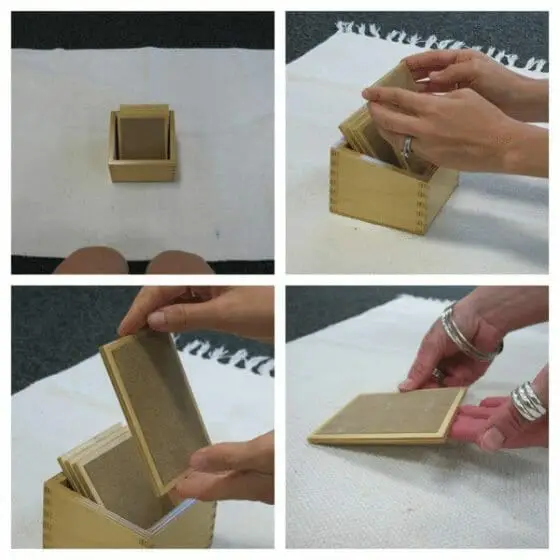
- Place the box in front of you
- Remove tablets one at a time with fingers on both sides of the tablet
- Pick up the corner with one hand 3-finger grip, pull it out, and hold the lower edge with the 3-finger grip of the other hand.
- Gently place it on the rug
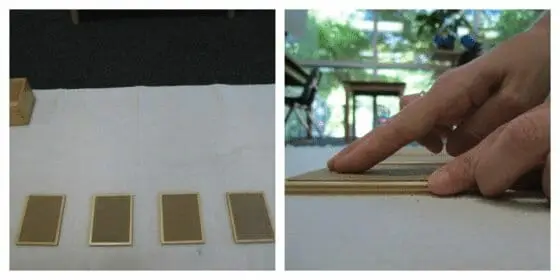
- Arrange the tablets randomly in a line from left to right
- Steady each tablet with the left thumb and finger at the lower corner. Starting at the left tablet, stroke each one by moving the first two fingers of the dominant hand from top to bottom.
- Emphasize a light touch and pause at the end of each tablet
- Offer the child a turn to touch the tablets
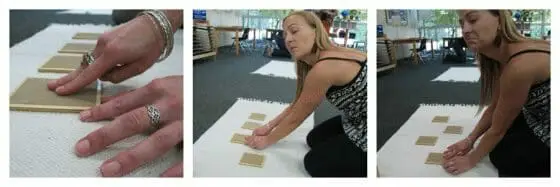
- “Now let’s see if we can find a match. I am going to use my fingers not my eyes to do this work.”
- Isolate the left tablet at the lower left and stroke it down with the right hand.
- Stroke each tablet until you find a match. Pull it slightly out of line, touch the control, and then touch the mate.
- Move the mate to the right of the control. Stroke the control again, then the mate again. Move them to the left: “These two are the same. They are a pair.”
- Match the second pair in the same way.
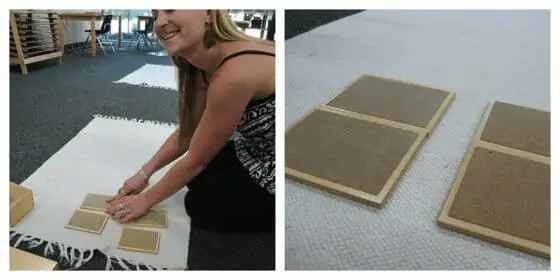
Recheck the pairs. Offer the child a turn. Randomize the tablets. Then return to the shelf.
The Rough and Smooth Touch Tablets Lesson: Presentation II-IV
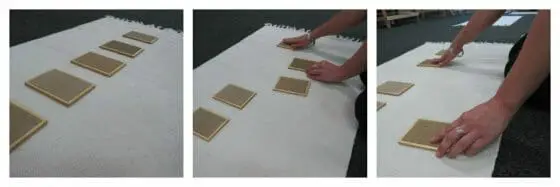
Add one additional pair per presentation until there are five
The Rough and Smooth Touch Tablets Lesson: Presentation V
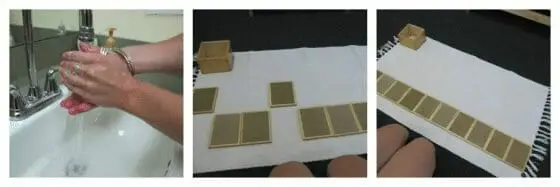
“Would you like to do something new with the tablets? Let’s wash out hands first.”
- Array the tablets in a random line from left to right.
- “Now I am going to find the roughest one.” Stroke each tablet from left to right. “This one is the roughest.” Move the roughest one to the lower left.
- “Now I am going to find the smoothest.” Same steps as above: “This one is the smoothest.” Move the smoothest one to the lower right. Be sure to compare tablets again if they feel similar.
- Look for the next roughest, then the next smoothest. Place tablets in a line as they are graded.
- When completely graded, recheck the tablets from left to right, saying the names as you stroke each one.
- Offer the child a turn. Randomize for the child. Only use three tablets if five is too much for the child.
